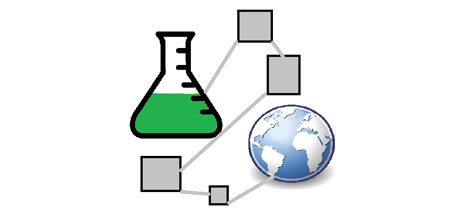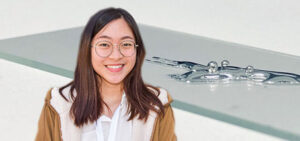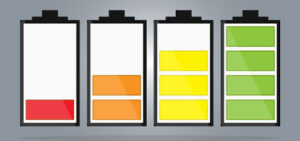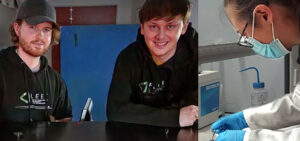“Inventions and new products come from combining novel and existing technologies” (Joseph Schumpter)
- What is ‘translation’ anyway? And what are the benefits for me / my work?
- Does this apply to my work? Will industry be interested in what I’m doing? (Spoiler: Yes it does! Matt Davis explains quantum weighbridges)
- How can FLEET help me do this?
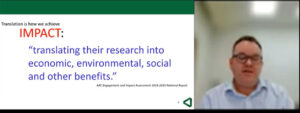 A FLEET audience of around 40 attended an introductory talk to FLEET’s new translation program in March, learning how science (in particular, their own science) can be translated into economic, environmental and social benefits.
A FLEET audience of around 40 attended an introductory talk to FLEET’s new translation program in March, learning how science (in particular, their own science) can be translated into economic, environmental and social benefits.
“This is how we translate research outcomes into wider societal impact, and develop members’ translation skills,” says guest presenter and EQUS Translation Program Manager Dr Michael Harvey, who delivered the talk with FTP Director Prof Matt Davis.
Research→technology→product→business
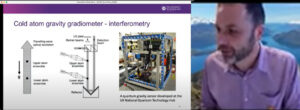 Black-body radiation can be a useful model to think about this process: From the initial discovery that temperature is proportional to wavelength (research), to identifying potentially useful applications such as heating wires to generate light (technology), to solving technical challenges and creating light bulbs (a product, almost always the combination of the new technology with existing technologies), to production, distribution, etc (business).
Black-body radiation can be a useful model to think about this process: From the initial discovery that temperature is proportional to wavelength (research), to identifying potentially useful applications such as heating wires to generate light (technology), to solving technical challenges and creating light bulbs (a product, almost always the combination of the new technology with existing technologies), to production, distribution, etc (business).
Translation of research supplies a concrete return on the public’s investment in science – whether financial/economic, or via improved living standard and quality of life.
- Industrial physics produces 13% of US GDP (2016 numbers)
- US exports from physics-based sectors are US$1 trillion, 20% of GDP (including indirect benefits increases this to 30%)
But there are also personal benefits, including the professional satisfaction of seeing your research in use, learning the challenging process of research commercialisation, start-ups or licensing (including establishing fun, interesting, and potentially useful new connections).
But how to get started… First, we ask ourselves: “could my research solve someone else’s problem, or meet someone’s needs?” Is there some way to apply your research to improve an existing product or technology?
Research-centre translation programs such as the new FLEET Translation Program (FTP) will help bridge the “valley of death” in early development of technologies between fundamental research and commercial involvement, which tends to demands shorter-term returns.
Does this apply to my work? Will industry be interested in what I’m doing?
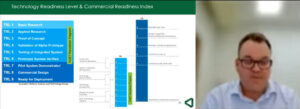 As a theoretical physicist, Matt Davis (UQ) had never thought his own work could be a candidate for commercial application. That assumption has proven incorrect in the last two years, with application of quantum weighbridges.
As a theoretical physicist, Matt Davis (UQ) had never thought his own work could be a candidate for commercial application. That assumption has proven incorrect in the last two years, with application of quantum weighbridges.
Based on an idea that Matt’s work in ultra-cold-atoms (ie, the ‘research’ phase mentioned above) could be applied to interferometry-based atomic gravimeter (the technology) in a new, highly-sensitive and non-invasive ‘quantum weighbridge’ (the product) for example weighing trucks or railway carriages in mining (business).
The initial idea – the ‘problem’ that needed to be solved – was that weighing big things is a bit of a problem.
The process was initially developed as a summer project, which evaluated different technologies, and performed trial computations.
“That initial process established that this was not a completely crazy idea,” says Matt. “So we applied for funding via the EQUS Translation Research Project, and with that funding we assembled a team to progress the idea.” That team included bringing on board new (postdoc) researchers, undergrad Kyle Clunies-Ross who had carried out the summer student some and EQUS Director Prof Andrew White, who had proposed the initial concept.
Development was assisted by Matt’s involvement in the Cruxes Ascend project, which coaches academics through the translation process (FLEET has put a number of researchers through Ascend, as explained here). This included talking to possible users of such technology, in mining, industry and defence.
At this point, simulations suggest precision of better than 1%, and more evaluation is continuing.
“I never thought I’d get involved with translation, but my experience at EQUS has been so positive that I’m now a champion of the process and excited that we’ve now got a translation program at FLEET.”
How FLEET’s new translation program can help
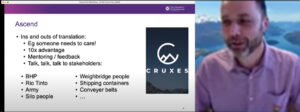 The FTP provides resources, advice and industry connections to help members through this process, developing Centre research into proofs-of-principles, prototypes, and technical demonstrations.
The FTP provides resources, advice and industry connections to help members through this process, developing Centre research into proofs-of-principles, prototypes, and technical demonstrations.
The process starts by members having a conversation with the FTP program manager, leading into an application for FTP funding. That funding would see the process though technology development, market research, finding industry partners, and prototype planning.
FTP is providing $500k for members’ translation projects through to March 2024, including options for a researcher’s stipend, full-time or part-time Fellowship, and/or facilities (equipment, consumables, external vendors, etc).
- The talk is available to FLEET members via the link on the FLEET intranet.
- See more on Cruxes Ascend program
- More information on FLEET’s Translation Program

